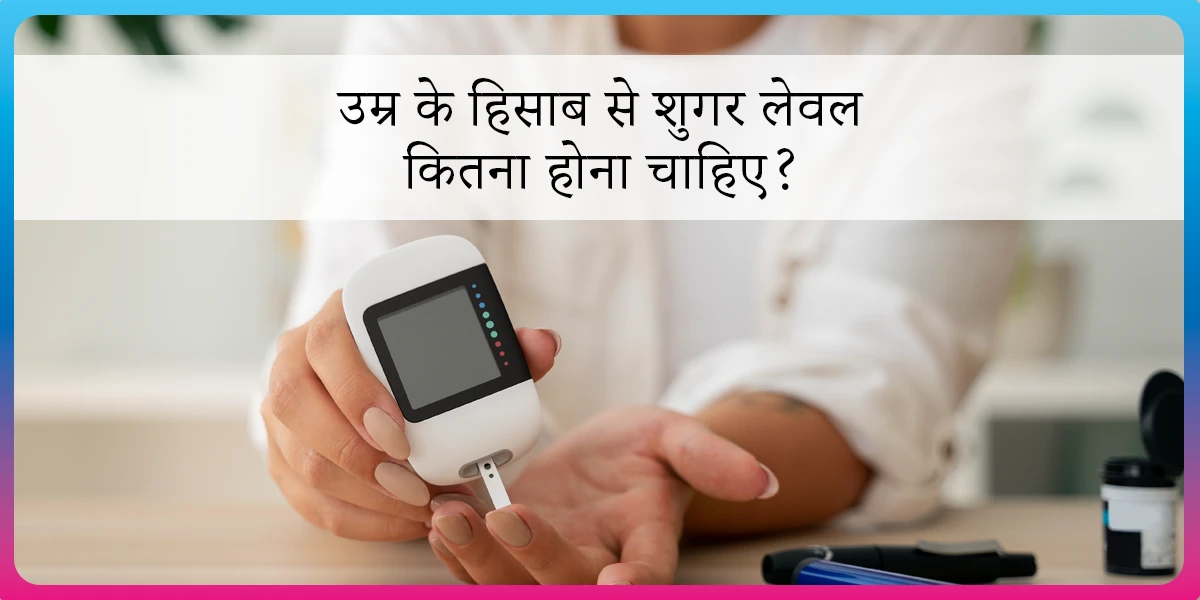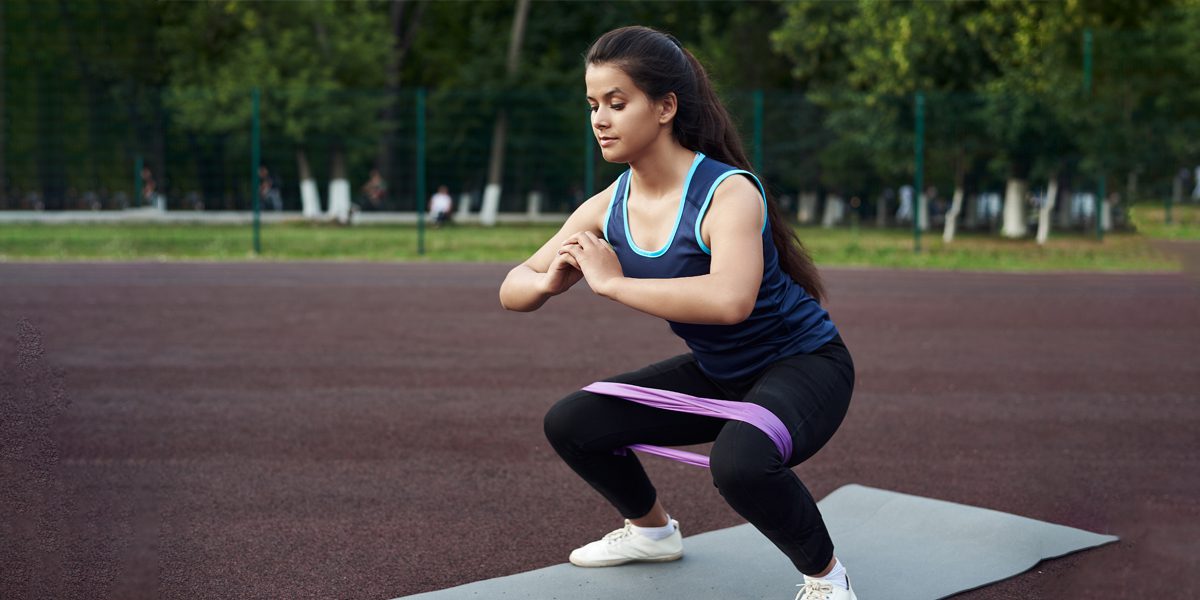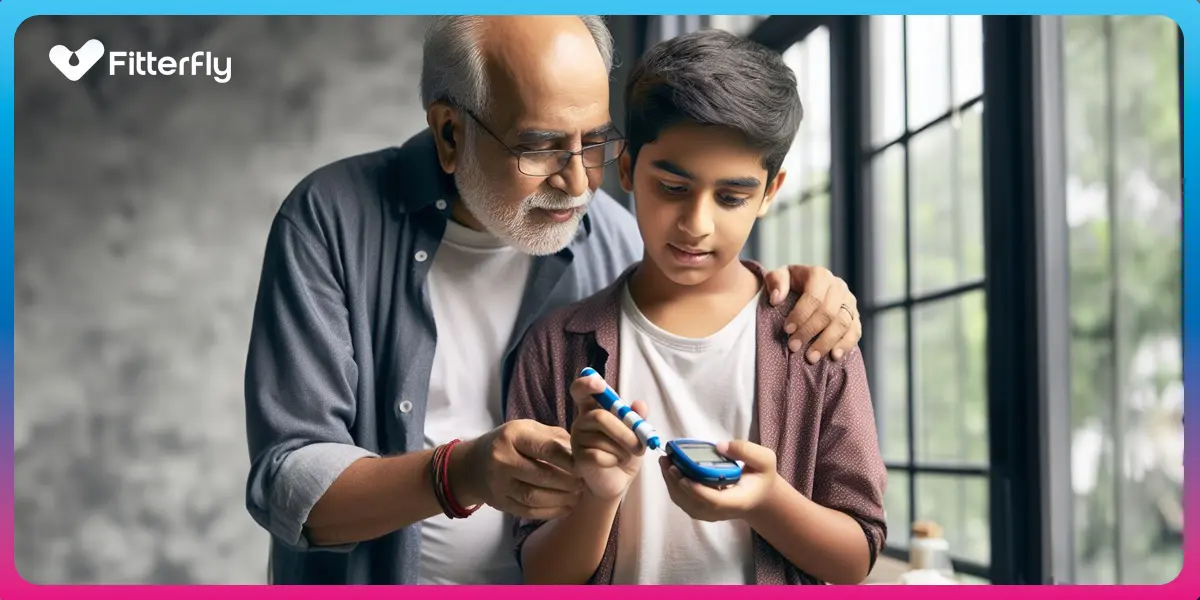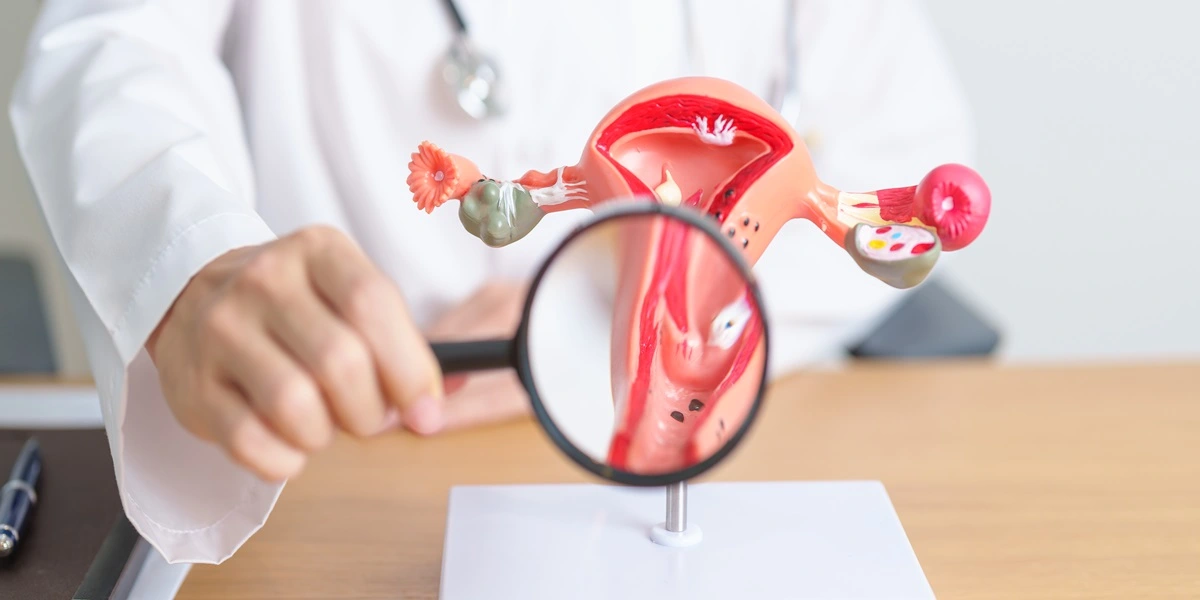17 Tips to Avoid Overeating
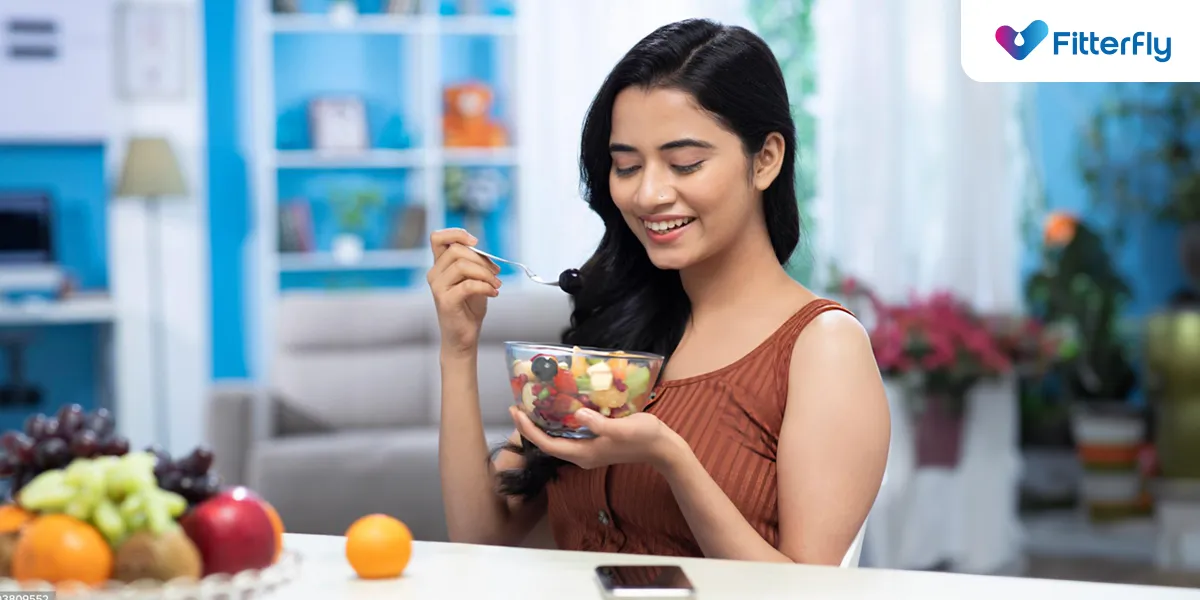
Yummmm, biryani! I can’t resist it.
Yes, that’s the first thing that comes to mind when we see our very own favorite biryani, and we end up eating it until our tummy runs out of space. 😄
But hold on, have you ever thought that you might actually be overeating? If you have diabetes (and even if you don’t!), this could negatively affect your health.
In India, where our cuisine is typically rich with a lot of ghee, oil, masalas, and sweets, controlling portion sizes can be quite challenging. But, with a few smart portion control tips, it’s possible to enjoy your meals while keeping your blood sugar levels in check.
Let’s see what are they:
1. Do You Know the POWER of Ordered Eating?
Yes, the sequence in which you eat your meal can really impact your digestion and hunger.
- Begin with a salad to help control your appetite, then move on to proteins like dal or paneer, and finish with carbohydrates like roti and rice.
- This order not only manages your hunger but also helps prevent sudden blood sugar spikes.
- It’s a small adjustment that can make a BIG difference in how you feel after eating.
2. Try Supplements Before You Eat a Meal
Ever felt cravings to eat something sweet after eating?
Taking fiber and protein supplements before a meal can help prevent that.
For example, a fiber supplement like Isabgol (psyllium husk) or a protein shake can slow down sugar absorption, giving you a steadier energy level.
This way, your body gets a heads-up to manage food better that you are going to eat, keeping your blood sugar more balanced and your energy consistent.
3. Smaller Plates = Less Food, More Satisfaction
Did you know using smaller plates can make you feel fuller faster?
It’s a simple but effective trick: a smaller plate makes your serving look bigger, so you eat less but still feel satisfied. For example, 2 servings of biryani look full on a small plate than on a big one.
4. Start Your Meal with a Salad!
Did you know starting with a salad can help you eat less of your main meal?
Yes, it is packed with fiber and nutrients that fill you up early, so you’re likely to consume fewer calories later on. This can also help keep your blood sugar levels stable.
To know your chances of Diabetes reversal, take the Diabetes Reversal TestDiabetes Reversal
Calculator
5. Consume Fluids First → Chass and Soup
Before we reach for the main meal, let’s not forget the importance of fluids.
Our desi drinks like chass (buttermilk) or a warm bowl of soup can be consumed before meals to promote a feeling of fullness. These drinks prepare your digestive system, help in controlling the portion sizes of the main meal.
6. Be Nutty Before You Eat
Did you know that munching on about 8-10 almonds half an hour before a meal can stabilize your blood sugar?
A study found that eating 20g of almonds before eating helps manage blood sugar levels. Nuts aren’t just tasty; they’re loaded with healthy fats, protein, and fiber.
These nutrients help slow down how fast your body absorbs carbs and keeps you feeling fuller for longer.
7. Opt for Smaller-Sized Foods
Choosing a sada dosa over a larger paper dosa, which we share with our friends or family, can help you eat fewer calories.
This idea works for other foods, too like, opt for a fulka instead of a chapati or a small sandwich instead of a large one. It’s an easy way to manage portions.
8. Unlimited Khane ka Offer – Mat TRY KARO!
Ever been tempted by unlimited buffets or free refills? It’s easy to overdo it, especially at events like weddings where food is endless and you don’t have to pay.
Here’s a tip: Choose individual dishes from the menu instead of a buffet or set meal when dining out. This helps you control your portions.
And remember, stop eating when your stomach says, “ab bass bhi karo, kitna khaoge”. This way, you enjoy your meal without overeating.
9. Do you also Fall for Combo Deals?
Combo offers like McDonald’s “Extra Value Meal”, “Happy Meal” or KFC’s “Combo Meals,” where you get multiple items like a burger, fries, and a drink for a cheaper price than buying them separately.
This makes the deal seem attractive and can lead to buying more food than you need, and end up adding more calories going in your tummy.
Similarly, using apps like Swiggy or Zomato to order food can tempt you to add extra items to your cart because of promotions or meal deals. This convenience often results in ordering larger portions than intended.
Being mindful of these tactics can help you control how much you eat and spend.
For example: When ordering say a Subway sandwich or even biryani for your lunch, you might find a promotion offering or a ‘value deal’ where you’ll get a free Coke or a sweet dish (like gulab jamun or halwa).
This kind of deal tempts you to add more unhealthy carbohydrates and sugar to your meal than you intended.
10. The Importance of Plate Eating
We get it, Lays chips and Kurkure are irresistible, right? But have you ever found yourself munching through an entire packet without noticing? Here’s a simple trick:
Next time, serve your snacks on a plate instead of eating directly from the packet. This small step lets you see exactly how much you’re eating and helps you keep those portions in check.
Reduced HbA1c by HALF in 6 months


6.6%
Happy members
EMI
Guarantee
4.8/5
Diabetes Prime Program
11. Avoid Eating During Screen Time
Have you ever noticed how a jumbo pack of chips is empty by the end of a 40-minute Netflix episode?
Yes, when you’re absorbed in a show, it’s easy to munch away without paying attention to how much you are eating.
This kind of distraction can lead to eating much more than you planned or should, which isn’t great for portion control or managing your blood sugar levels.
12. Your Glass Size Matters!
When it comes to drinks, the size of your glass has a big impact on how many calories you take in. Think about it: a “tapri wali chai” is served in a modest cup, while a Starbucks beverage often comes in a much larger size.
This difference in size isn’t just about volume, it’s about the extra sugar and calories that can slip into your diet unnoticed.
By choosing the smaller tapri-style cups, you’re more likely to keep your calorie intake in control without even thinking about it.
13. Eat a Bit before you go Dining Out
To avoid overeating at special meals or when dining out, have a light snack like an apple or some nuts beforehand. This can help curb your hunger and make it easier to manage your portions at the meal.
14. Weigh and Measure Your Food to Know How Much You’re Eating
We know it’s not always easy to do this, especially with so many ingredients used in one dish. For instance, making vegetable khichdi involves rice, dal, and vegetables. But it’s still possible to measure portions!
You can simply weigh and measure each ingredient before cooking. Once you get the hang of it, it becomes second nature and makes portion management much easier.
15. Read Food Labels
Understanding food labels is crucial for portion control. Check the serving size, calories, and nutrients per portion. For example, a 100g pack of biscuits may mention that one serving is just 25g. This helps you realise how much you’re consuming versus what you should consume.
Being mindful of these details helps you make healthier choices. When looking at packaged foods, pay attention to hidden sugars and unhealthy fats listed under different names. This will help you stick to your portion control goals and make informed food choices.
16. Keep a Food Journal to Monitor Portions and Blood Glucose
Tracking what you eat helps you see patterns and make better choices. Keeping a journal is an excellent way to monitor portions and their effects on your blood sugar levels.
You can also do this through the Food Diary section in the Fitterfly App for free, which makes it easier to log your meals and track your progress effortlessly.
17. Counting Carbs
Carb counting is a simple yet effective way to manage diabetes. It involves tracking the number of carbohydrates you consume in each meal and balancing it with physical activity and medication.
Carbohydrates have the most significant impact on blood sugar levels, so understanding how much you’re eating can help prevent spikes and maintain steady glucose levels. For example, 1 medium-sized roti contains about 15 grams of carbs, while 1 cup of cooked rice has approximately 45 grams.
According to a study, consistent carb intake throughout the day helps in better blood sugar control and prevents sudden fluctuations. By planning your meals and distributing carbs evenly, you can achieve more stable energy levels and better diabetes management.
How We At Fitterfly Can Help You?
Understanding why and how you eat can help you to control your portion sizes and make healthier food choices.
Often, we are tempted to eat more because of special offers or because our food looks more appealing on a larger plate.
Our success coach can help you with techniques like mindful eating, enabling you to avoid overeating.
Our Nutrition Coach is also here to guide you on what’s best for your blood glucose levels so you can continue enjoying the foods you love without worrying about your sugar levels.
At Fitterfly, we focus on such aspects to improve your lifestyle and help you manage and potentially reverse your diabetes.
If you want to know more, sign up for Fitterfly’s Diabetes Prime Program.
You can also speak to us or contact us 08068507599 today!
FAQs
1. What are 3 tips for portion control?
Using smaller plates can make your meals look bigger and help you eat less. Starting with a salad can fill you up and stop you from overeating. Measuring food with cups or scales helps you know exactly how much you’re eating and stay on track.
2. What is the 20-minute rule for eating?
The 20-minute rule suggests that you should eat slowly and wait at least 20 minutes before deciding to take a second helping. This is because it takes about 20 minutes for your brain to register that you are full.
When we eat too quickly, we often overconsume before our body has a chance to recognise satiety signals. A practical way to follow this rule is by putting your fork down between bites, chewing thoroughly, and sipping water throughout the meal. This habit can help prevent overeating and improve digestion.
3. What are the 5 importance of portion control?
- Helps prevent overeating and unnecessary calorie intake.
- Maintains stable blood sugar levels, especially for people with diabetes.
- Aids in weight management by keeping calorie consumption in check.
- Encourages mindful eating and better digestion.
- Reduces the risk of lifestyle-related diseases like obesity and heart disease.Practicing portion control allows you to enjoy your favorite foods without guilt and avoid the feeling of sluggishness that often comes with overeating. It also helps in building a healthier relationship with food.
4. What is the 30-30-30 rule?
The 30-30-30 rule is a simple guideline that suggests incorporating 30 grams of protein, engaging in 30 minutes of physical activity, and eating within 30 minutes of waking up. This approach helps in maintaining muscle mass, keeping blood sugar levels stable, and boosting metabolism.
A practical way to implement this rule is by having a protein-rich breakfast such as eggs, paneer, or sprouts and scheduling a daily morning walk to kickstart your metabolism.
5. What is the golden rule of eating?
Eat until you are 80% full, also known as “Hara Hachi Bu,” a concept followed in Japan. This helps prevent overeating and supports better digestion.
6. What should be the serving size of protein per day?
The recommended daily protein intake is about 0.8 to 1.0 grams per kilogram of body weight for a sedentary person. For example, if you weigh 60 kg, you should aim for around 48-60 grams of protein per day.
7. Can I lose weight just by portion control?
Yes, practicing portion control can significantly contribute to weight loss by helping you consume fewer calories without feeling deprived. Instead of drastic diet changes, portion control allows you to eat all types of food in moderation. For example, instead of having a full plate of rice, opt for half a plate with more veggies and protein to feel full while cutting down on calories.
Combining portion control with mindful eating, such as savoring each bite and eating without distractions, further enhances weight management.
8. What is a healthy carb serving size for diabetes?
A healthy carb serving for people with diabetes is usually around 15-30 grams of carbohydrates per meal, depending on individual health goals and activity levels. It’s best to consult a nutritionist to customize carb intake based on personal needs.
This blog provides general information for educational and informational purposes only and shouldn't be seen as professional advice.










